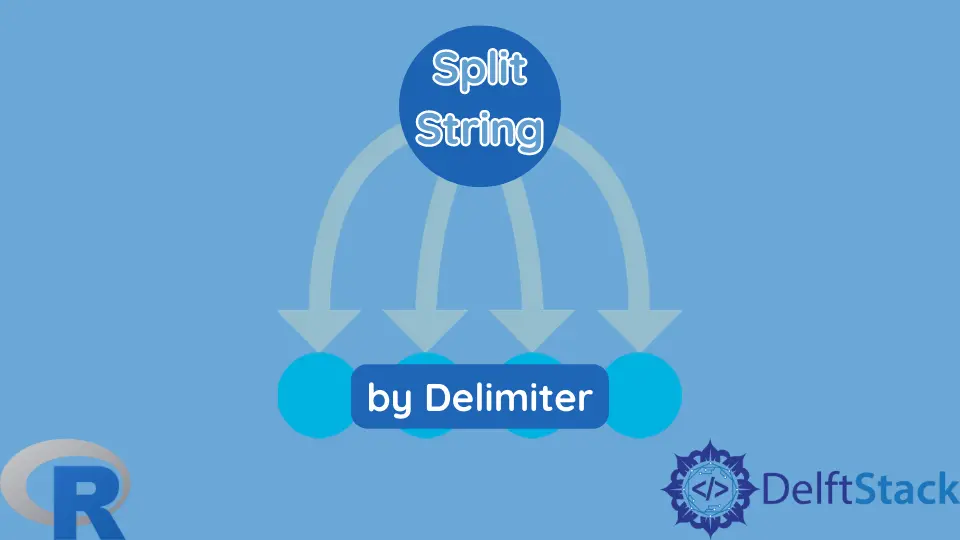R에서 구분 기호로 문자열 분할

이 기사에서는 R에서 구분 기호로 문자열을 분할하는 방법에 대해 설명합니다.
strsplit을 사용하여 R에서 구분 기호로 문자열 분할
strsplit은 R 기본 라이브러리와 함께 제공되며 추가 패키지없이 대부분의 설치에서 사용할 수 있습니다. strsplit은 문자형 벡터와 함께 제공되는 지정된 구분 기호로 문자형 벡터를 하위 문자열로 분할합니다. 함수의 첫 번째 인수는 분할 할 문자형 벡터입니다. 이 경우 주어진 문장에서 각 단어를 구분하기 위해 공백 문자를 지정합니다. 출력은 문자형 벡터 목록으로 제공됩니다.
library(dplyr)
library(stringr)
str <- "Lorem Ipsum is simply dummied text of the printing and typesetting industry."
strsplit(str, " ")
출력:
> strsplit(str, " ")
[[1]]
[1] "Lorem" "Ipsum" "is" "simply" "dummied" "text"
[7] "of" "the" "printing" "and" "typesetting" "industry."
str_split을 사용하여 R에서 구분 기호로 문자열 분할
또는str_split함수를 사용하여 구분 기호로 문자열을 분할 할 수도 있습니다. str_split은stringr패키지의 일부입니다. str_split도 정규식을 패턴으로 사용한다는 점을 제외하면strsplit과 거의 동일한 방식으로 작동합니다. 다음 예에서는 일치하는 고정 문자열 만 전달합니다. 함수는 선택적으로 반환 할 하위 문자열의 수를 나타내는 세 번째 인수를 사용할 수 있습니다.
library(dplyr)
library(stringr)
str <- "Lorem Ipsum is simply dummied text of the printing and typesetting industry."
str_split(str, " ")
출력:
> str_split(str, " ")
[[1]]
[1] "Lorem" "Ipsum" "is" "simply" "dummied" "text"
[7] "of" "the" "printing" "and" "typesetting" "industry."
str_split함수의 또 다른 선택적 매개 변수는 4 위인simplify입니다. 이 매개 변수는 기본적으로FALSE값을 가지며, 이는 함수가 문자형 벡터 목록으로 하위 문자열을 반환하도록합니다. 주어진 인수에TRUE를 할당하면str_split은 문자 행렬을 반환합니다.
library(dplyr)
library(stringr)
fruits <- c(
"apples and oranges and pears and bananas",
"pineapples and mangos and raspberries"
)
str_split(fruits, " and ")
str_split(fruits, " and ", simplify = TRUE)
출력:
> str_split(fruits, " and ")
[[1]]
[1] "apples" "oranges" "pears" "bananas"
[[2]]
[1] "pineapples" "mangos" "raspberries"
> str_split(fruits, " and ", simplify = TRUE)
[,1] [,2] [,3] [,4]
[1,] "apples" "oranges" "pears" "bananas"
[2,] "pineapples" "mangos" "raspberries" ""
Founder of DelftStack.com. Jinku has worked in the robotics and automotive industries for over 8 years. He sharpened his coding skills when he needed to do the automatic testing, data collection from remote servers and report creation from the endurance test. He is from an electrical/electronics engineering background but has expanded his interest to embedded electronics, embedded programming and front-/back-end programming.
LinkedIn Facebook